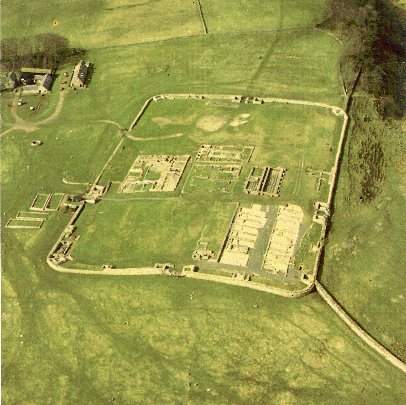
Source: AirFotos Ltd
|
Source: AirFotos Ltd |
Housesteads Roman FortVisited 20 March 2006 |
As the aerial photo (looking west) above suggests, we must tell a three-dimensional story with a two-dimensional set of pictures. The model and plan below (both orientated north) displayed at the Fort Museum shown at the far upper left in the aerial photo) help to conceptualize what the remaining pile of rocks suggests: the most complete Roman fort in Britain.
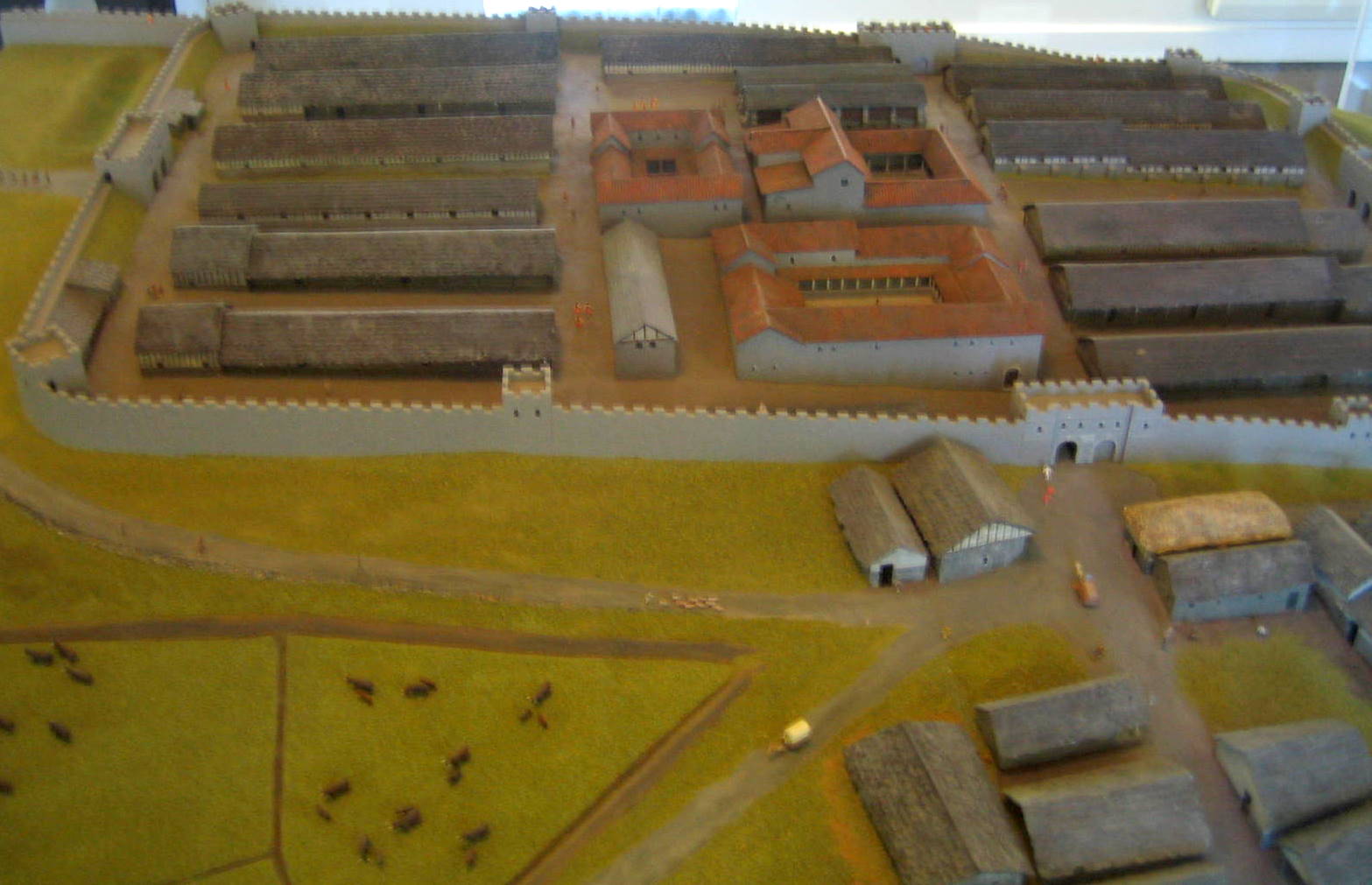
The five-acre site contains remains of the four gates and examples of all major buildings found in a Roman fort staffed by Auxiliaries, troops from the provinces who would become Roman citizens upon discharge. (By contrast, Legionnaires were citizens upon enlistment. The legionnaires who built the wall and this fort were stationed in large fortresses such as at York [40].) Below is the diagram of this fort, showing the classic "playing card" shape -- rectangular with rounded corners.
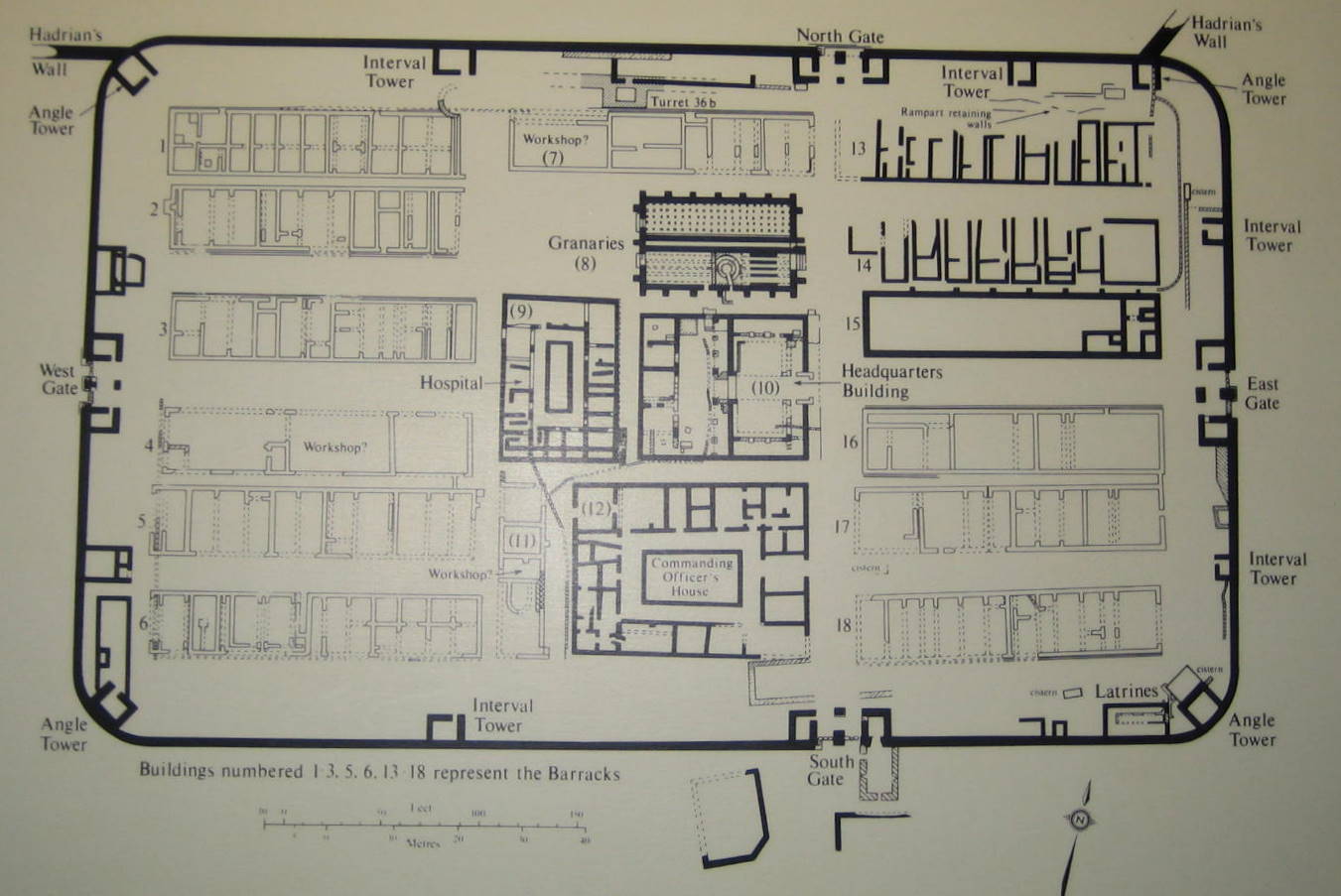
Sources disagree on how many of these forts there were but range from 12 to 20 of them to support the 73.5 miles of Hadrian's Wall -- about one every 4-6 miles. By contrast, when the Romans built the Antonine Wall 100 miles to the North, they planned forts to be 6 miles apart, but ended up building them every 2 miles due to the frequent attacks by the pesky Caledonians. The garrisons supporting Hadrian's Wall were first located south of the wall to take advantage of the forts that existed prior to its construction on the old Stanegate road. However, it became quickly apparent that these needed to be moved to the Wall itself if they were to be able to provide quick response to an attack [39]. Once the forts, milecastles, and signal towers were completed, work began on the wall itself.
Housesteads is the typical Roman auxiliary fort built in the first three centuries AD -- the same buildings in the same location [40]. Once a soldier was inside, he knew where everything was whether this was a permanent fort with buildings or a mobile fort with tents. What is unusual about this fort, however, is its orientation with the long walls on the north and south. For most forts, Hadrian's Wall would be the southern border and they would stick out defiantly into enemy territory. That's impossible to do here because 295 million years ago cooling magma formed the Whin Sill and the Romans used the resulting cliff to bolster the wall's defense in this area.
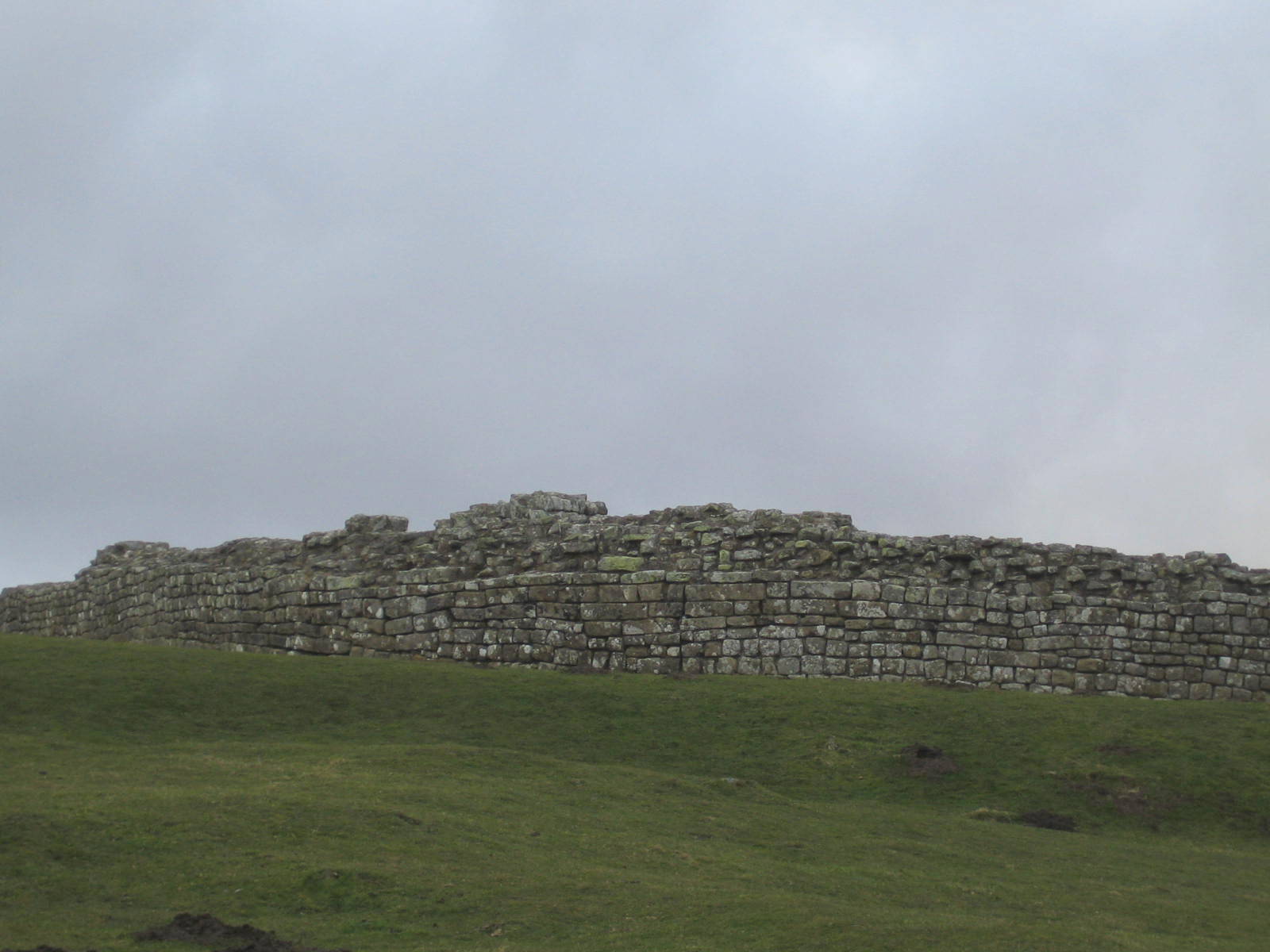
Above is the outer western wall of the fort, near the museum. While the "narrow" Hadrian's Wall was about 8 feet wide, the walls of the fort were typically 4 feet 7 inches wide[45]. The form of the Romans' stone forts evolved from the earth and timber forts with rounded corners and earthen banks in front of them[40].
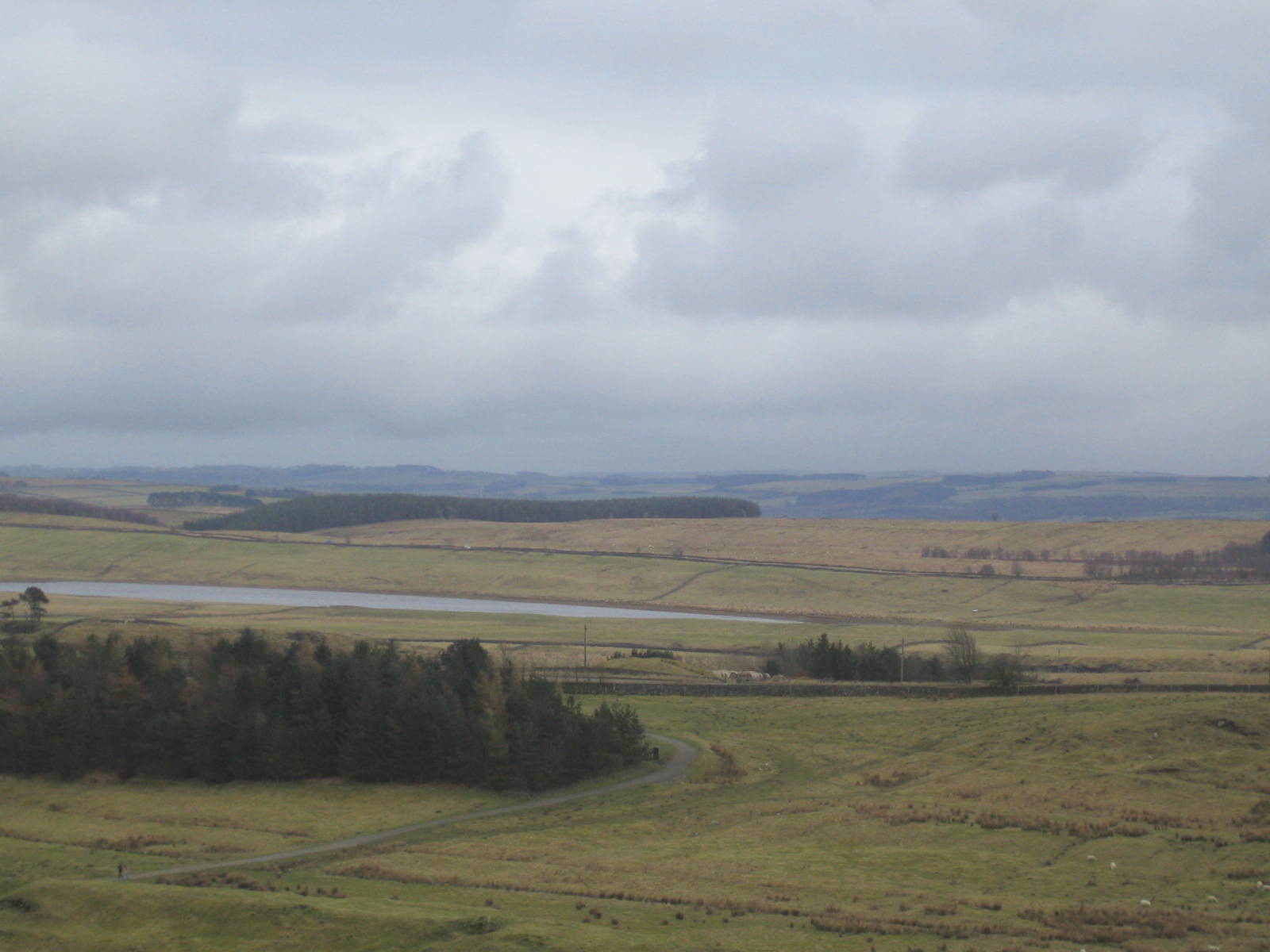
Above is a view from the fort looking south. The car park is on the far left about a half mile away, hidden by the evergreens. After hiking up the paved road, visitors dodge sheep as they climb the gentle ascent to the fort. After the Romans left in the 4th century AD, this once more became a wild place, claimed by neither England nor Scotland. In the 16th century, it became known for housing robbers. Not until 1698 did the rule of law force the more notorious inhabitants to migrate to America[50]. Soon after, the Roman remains became known and by 1800 most of the sculptures and inscriptions had been gathered into what was to become the Museum of Antiquities in Newcastle which specializes in British Roman History of the Hadrian's Wall era. Further excavations during the mid nineteenth century by a new owner, John Clayton, cleared the walls of Housesteads fort and found many artifacts now in the Chesters Museum. He lived to age 98. In 1930 his descendants donated the fort to the National Trust[52].
![]()
This
work is licensed under a Creative
Commons Attribution-NonCommercial-NoDerivs 2.5 License.